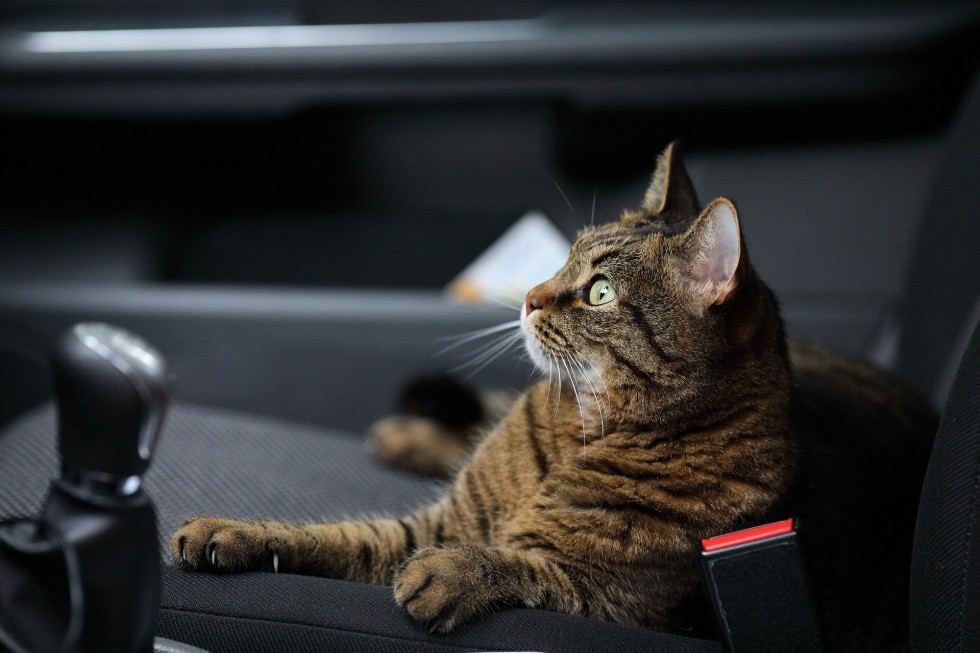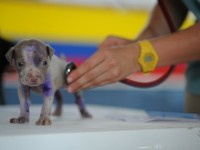Sometimes we just need to take our cat for a car or even plain journey. Whether it’s just a quick visit to the vets or a long-term visit, you need to make sure that your animal goes through this experience safely and without being too stressed and uncomfortable.
But, there’re situations when you need to leave your house for more than just a couple of days.
And, if you don’t want to bother your neighbors or friends and ask them to make sure that your pet has enough food and water in its bowls and especially change its litter box, you may find a pet sitter or even a boarding facility (aka hotel for pets and home animals).
Thus, you’ll know that your little kitty cat will be taken care of during your absence. So, if that’s an option for you, go to HireRush.com to leave a pet sitting task or contact local pros to see if you’re able to place your cat under their control.
But, if you’re having trouble with taking your cat to the vets, if you’re moving or if you don’t want a stranger to take care of your own animal for a long time, you need to find the way to ensure more or less comfortable transportation conditions to your cat.
Here’re a few tips that will definitely help you do that. Good luck on your journey!
15 tips on travelling with a cat
- Find a comfortable carrier for your pet. There’re numerous options of cat carriers, and most vets agree that those plastic ones with wire doors are the safest versions.
But, no matter which one you choose, it’s important that they should have one-two see-through walls. Your pet will feel a lot more comfortable if it’s able to look around and see what’s going on outside the carrier.
Besides, you need to make sure that your pet’s travelling carrier features proper ventilation, as you don’t want your cat to have problems with the lack of fresh air, especially when it’s in quite stressful conditions already. - Get your cat used to the idea of being inside the carrier in advance. Make it fill like something that belongs to your pet.
The first thing you need to do is to set this carrier closer to your pet’s bed and leave it open.
And, as most cats absolutely love to find different places to hide or sit in (like boxes, yea?), your curious kitty will definitely want to check it out. - Once you notice that your cat may sit comfortably in that carrier, try to lock it and walk with it outside for a couple of times.
This will help your animal to get used to the idea of being carried in that thing. - Your cat will be able to get used to a new carrier a lot faster if you put something familiar to him/her inside.
A blanket your pet sleeps on or a favorite toy, for instance. And, a little bit cat mint will attract your kitty to the carrier as well. - If you can, introduce your cat to the vehicle it’s going to travel in beforehand.
Let your fluffy friend spend a couple of minutes in it outside the carrier, sniff and rub against everything to get acquainted with the space.
Next time you bring your pet to that car, it will recognize its smell and won’t be as scared. - Make sure that your pet has a collar and tag with its name, your name and contact information. Check if the carrier’s lock works fine.
Unfortunately, you may take a hundred of safety measures, but you still won’t be completely protected from escaping accidents. - Don’t forget to pack everything your cat needs.
Its usual food, a couple of favorite toys, water, its own bowls and even litter box (for long-term visits) will not only be useful during the actual journey.
Familiar items will help your animal adjust to new and unknown conditions way smoother. - If you’re going to travel in a car and there’s enough seat room in it, it’s better to buckle the cat’s carrier up.
To make that even more secure, try to pull the seat belt through the carrier’s handle or space between two wires of the carrier’s door before buckling it in. - Long-distance trips require more throughout preparation.
You’ll need to find a crate that’s roomy enough for the cat’s litter box (opt for the one your pet uses on the regular basis), travel water (most important) and food bowls.
A cage for small-medium size dog will be perfect. (Borrow it from someone you know). - Ordinary bowls will cause a lot of spill trouble, so it’s better to spend a 4-5 bucks on special non-spill versions. If you travel with your cat a lot, you may find a special cat carrier with built-in litter tray and spill proof bowls worth buying.
- Make sure to give your cat its last meal 3-4 hours before you start travelling.
Then, your pet will do its business at home and you won’t have to bring its toilet (if you’re not going for a long drive, of course). - Remember that you’re not supposed to leave your pets in a parked vehicle alone (just like kids). That’s just vital during hot summer days.
- Talk to your cat during the ride to let it know that you’re here, you’re not going anywhere and that everything’s Ok.
Loving and peaceful voice of the owner will calm the pet down. - Don’t let your cat get out of the carrier and run around your vehicle. That might lead to unfortunate car accident.
If you’re not the driver, you may take your pet out of its travel cage to pet it or calm it down a little bit, but don’t let it escape and jump all over the car. - Once you reach your destination, make sure to set up the cat’s litter box, as well as water and food bowls ASAP.
Arrange a separate ‘corner’ for your pet to make it feel like it has its own space in that new and unfamiliar place.





